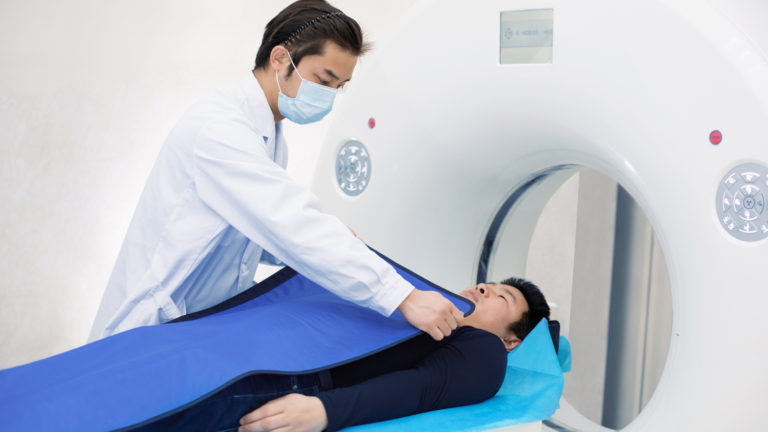
Playback speed:
As a person experiencing dementia-like symptoms, or a close family member or friend of such a person, you may wonder what would happen during a visit to the doctor.
Join us as we take you through the diagnostic process, where with the help of a team of healthcare professionals, you can better understand these dementia-like symptoms.
Overview of the diagnostic process
The process consists of a few to several sessions with healthcare professionals. It often begins with seeing a general practitioner (GP) or family doctor at a polyclinic or GP practice. The GP or doctor will conduct an initial screening and consultation.
The GP or family doctor may then refer the person experiencing dementia-like symptoms to a specialist team, or to specialists such as a neurologist, geriatrician, or psychiatrist for further consultations and assessments over a few to several sessions.
These sessions include a combination of consultations, detailed history taking, blood tests, cognitive tests, and brain scans to find out whether a person has dementia, and if possible, what type of dementia they have.
Read more on the various types of dementia.
On visits to the doctor, bring a trusted person along
We encourage persons going through the diagnostic process to be accompanied by a reliable, trusted person who knows them well; someone who lives with the person being diagnosed, or family members and friends who are close to the person. This is especially important on the first visit to the doctor.
This accompanying person can act as an informant, providing important information that may help in the diagnostic process.
In addition, this person can help the person being diagnosed to follow up with further diagnosis sessions. They can also be a source of support, journeying alongside the person going through the diagnostic process, as this journey can be challenging.

It is very helpful for persons going through the diagnostic process to bring someone along for their appointments.
The diagnostic process may include these procedures
1. Interviews
Both the person experiencing symptoms and people who know them well, such as family members, will be interviewed by healthcare professionals such as a doctor or nurse.
Healthcare professionals will often ask for more detailed information on:
- What symptoms the person has experienced, when they were experienced, and for how long. Symptoms may include memory loss, language issues, losing one’s directions, changes in mood and behaviour, and issues with one’s ability to plan
- How these symptoms have affected the person’s daily tasks and routines
- The person’s background, including medical history, the presence of any behavioural and psychological symptoms, and medications and supplements the person takes
- The person’s educational and occupational backgrounds

The diagnostic process will involve interviews about the person’s condition.
2. Tests for other existing medical conditions
To rule out or identify the presence of other medical conditions, doctors would often test for conditions other than dementia. These conditions might cause, contribute to, or make dementia-like symptoms more severe.
Some of these conditions include mood disorders such as depression; stroke; Traumatic Brain Injuries (TBI); neurodevelopmental conditions; delirium; and psychiatric conditions such as psychosis.
Find more information on other conditions that exhibit dementia-like symptoms.
3. Cognitive screening and assessments
As cognitive impairment is a key symptom of dementia, cognitive and language tests (for example, testing orientation, and short- and long-term memory) are conducted.
4. Blood tests
Blood tests are conducted to rule out other conditions by testing for markers of other disorders which could be contributing to the person’s symptoms.
5. Brain imaging
Brain scans are sometimes done after blood tests have ruled out other possible medical conditions. During brain scans, only the person’s head is scanned.
These brain scans include Magnetic Resonance Imaging (MRI), Computerized Tomography (CT), or Positron Emission Tomography (PET) scans.
Sometimes, more than one brain imaging scan will be done so that the medical team can better understand the person’s symptoms using the different brain scans’ results.
The machines used to conduct these different types of scans are all shaped like a doughnut on its side. The brain scan will happen with the person lying still. The procedure will take around 30 minutes to 90 minutes depending on what kind of brain scan the doctor uses.

In the above image, the patient lies down before the imaging procedure as a healthcare professional prepares him for the procedure. The machines used to conduct MRI, CT, and PET scans are all shaped like a doughnut on its side, like the white, round object in the image above.
The patient or their caregiver should inform the medical team on whether the patient:
- Is pregnant
- Has claustrophobia, as the machine surrounding the patient’s head may feel like a small, enclosed space
- Finds it difficult to tolerate loud sounds, as the scanning machines produce knocking noises periodically when in operation (ear plugs or headphones are offered before the scan procedure)
- May not be able to lie still during the procedure
If the patient is anxious and cannot lie still for the scan, they may be given a small dose of sedative, which is something used to calm a person down.
The patient will be taken care of by both a radiologist (a type of doctor who specialises in using medical imaging technologies to diagnose and treat conditions) and a radiographer (a healthcare professional who operates the machines making the scans) during the procedure.
- Information about MRI, CT, and PET brain scans
A painless, non-invasive way of using magnetic waves to create images of the brain.
Preparing for the scan
As a rule of thumb, patients are not allowed to wear or bring any metal objects into the MRI scan room. If removal of the metal item is not possible, the medical team must be informed immediately.
It is important to tell the medical team about whether the patient has:
- Medical implants (for example, cochlear implants, cardiac pacemakers, brain aneurysm clips, metallic implants on their spine or limbs)
- Tattoos, which may contain small amounts of metals
Patients will be asked to remove:
- Accessories and jewellery
- False teeth
- Hearing aids
- Wigs
The patient will be advised to remove or minimise the use of products such as makeup, nail polish, antiperspirants, or sunscreens, which may contain small amounts of metals.
During the scan
The scanning process lasts from 30 to 90 minutes. During this time, patients are to lie still for the MRI images to be taken.
A painless, non-invasive way to scan and create cross sectional images of the brain.
Preparing for the scan
The patient may be advised against eating or drinking a few hours before the scan to ensure that clear images are taken.
In addition, patients should remove any metallic objects that may interfere with the scan.
During the scan
The CT scan takes about 15 to 30 minutes. During this time, patients are to lie still. They may be asked to hold their breath or breathe in and out at some points in time.
A painless, non-invasive way of creating images of the brain.
PET works by detecting the radiation produced by a substance called a radiotracer. A radiotracer is injected into a vein in the patient’s arm or hand before the scan.
In the dementia diagnosis process, PET scans are used to detect the presence of proteins called amyloid and tau. Amyloid and tau build-up happens when a person is developing Alzheimer’s disease, which is the most common cause of dementia.
Preparing for the scan
The patient will be advised to fast for 6 hours before the scan, although they may still drink water.
In addition, patients should remove any metallic objects that may interfere with the scan.
About an hour before the scan, a radiotracer will be injected into a vein in the patient’s arm or hand. Patients will then stay still and relax as the radiotracer travels to different parts of the body.
During the scan
After the patient has been given the radiotracer and an hour has passed, the PET scan will begin.
PET scans last for about 30 to 60 minutes, during which patients should lie still.
Where to get more information and support
Starting the diagnosis process may be daunting, but getting a diagnosis brings clarity to both the life of the person experiencing symptoms and their families. The sooner you get help, the earlier treatment and support for dementia can begin.
If you or someone you know may have dementia and needs support or information, contact a Community Outreach Team (CREST) to find out more about how to get support, or call Dementia Singapore’s helpline at 6377 0700.







